---Nissan Silvia 'SGR-A' AJTCC Div.II Test Car---
---What-If Racing Concept---
The world of touring car racing in the 1980s and 1990's were very concentrated with the battles between Sierra RS500s, Nissan GT-Rs, BMW M3's, Toyota A70 Supra's, and even Mercedes with their one-off 500 SEC in 1989. They are not the only ones on track,though. In Group A, the most powerful car class are not always known to always be guaranteed to win. In any Group A field, the cars at any given time consisted of actually three classes: Div.III (Over 2500cc),the middle class Div.II(1600-2500cc), and of course Div.I(up to 1600cc).
What is concerned here is the field in the All-Japan Touring Car Championship, or AJTCC.
While we have the top cars in the highest class, does not mean the lower classes are not hotly contested either. Cars like the Toyota Levin/AE92, and Honda Civic EG6 both battle intensely, with alot of money being thrown around. However, the only thing that was missing was the presence of Nissan. They were more focused on outright wins than class wins, but there can be a glimpse into what might have been.
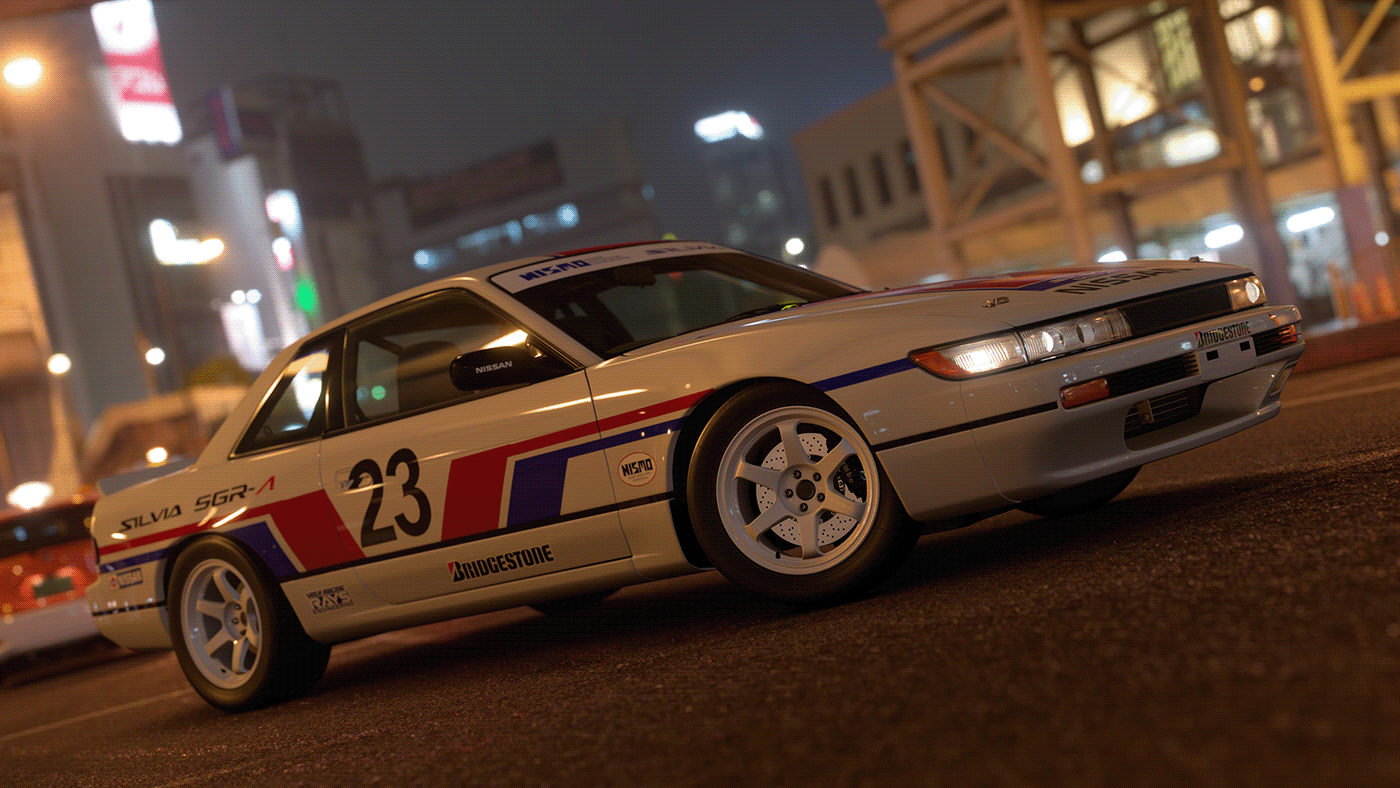

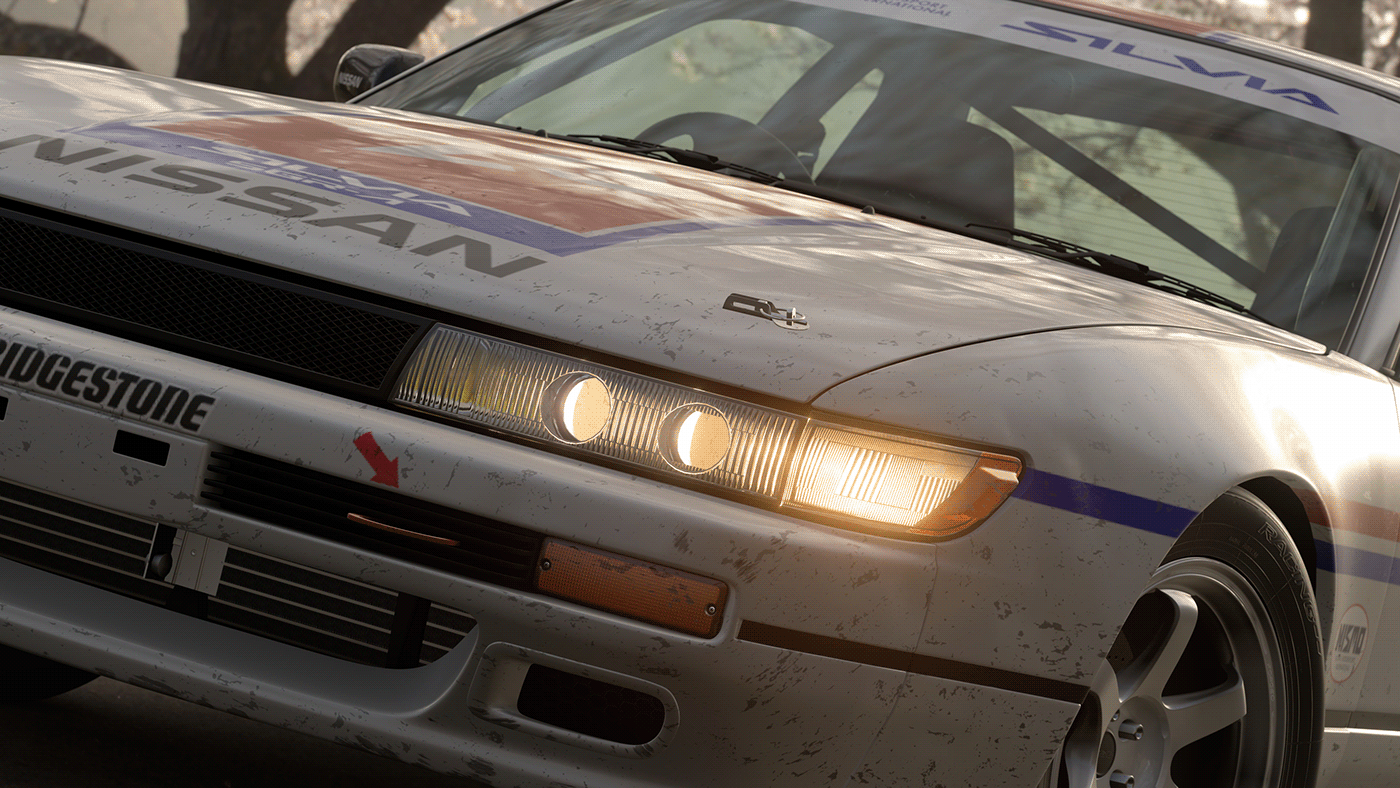

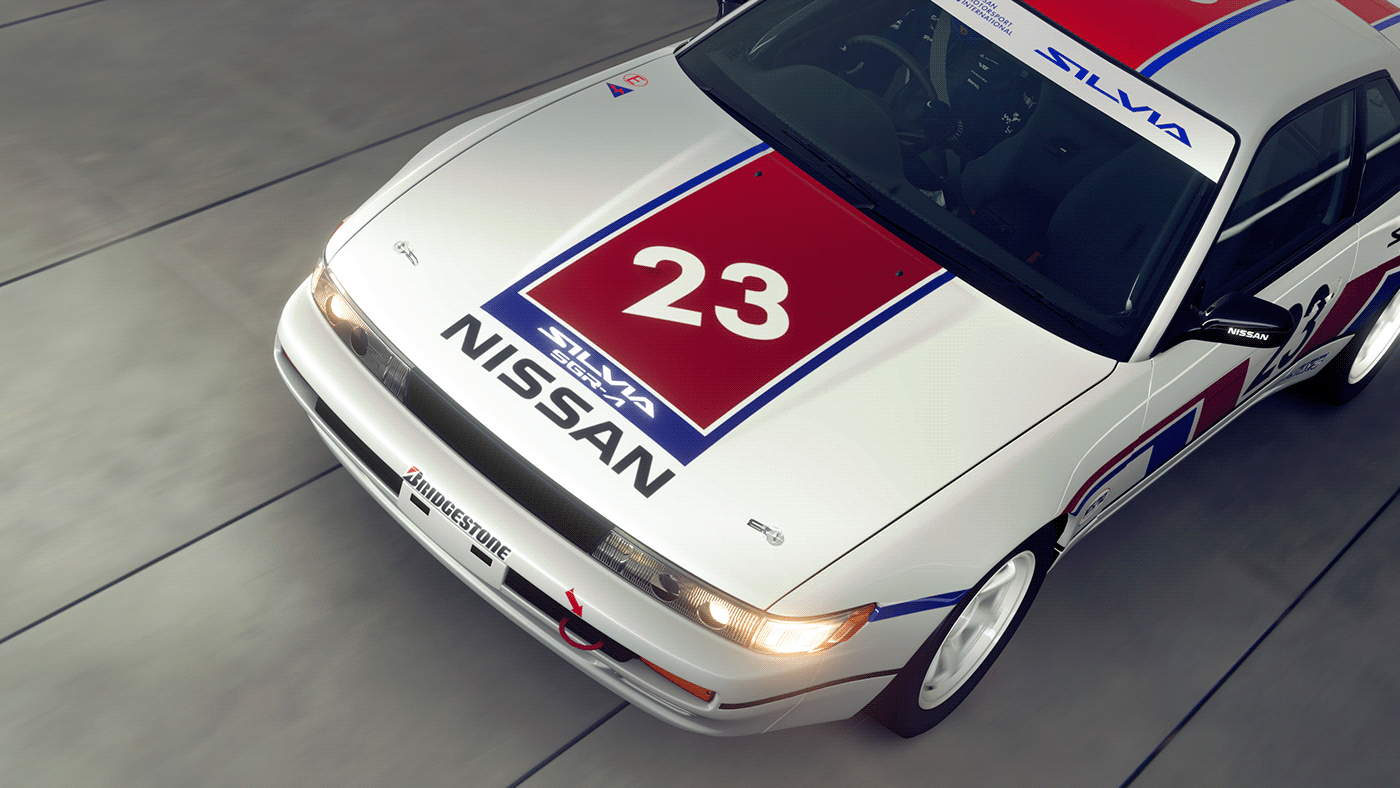
Starting with the Silvia S13 "Q's" platform, they first began to get as close to the minimum weight as possible. With changing the doors, hood, trunk, side mirrors and front fenders/rear quarter panels and replacing them with Kevlar bodywork. Stripping out the interior and stiffening the chassis, the car lost 310kg of weight, to lead up to a lightweight 890kg.
Next,the venerable CA18DE engine needs to be de-bored to 1.6L, and given a shorter stroke to the pistons and high-lift cams. Engine balancing, a massive air intake insert in the front end (hence the grille deletion), NGK spark plugs, and given high-pressure aluminum piston. Finally, it was finished off with 16-inch Volk Racing wheels w/Bridgestne slicks. The result was a engine with over 240HP @ almost ear splitting 10,000RPM!. The engine's noise was reflected in the change to the engine code was changed to CA168-TS, where the 'TS' stands for 'Tengoku no Sakebigoe', or 'Heaven Screamer'. With the car finished, it was christened the 'Silvia SGR-A', or "Sports Group Racing-A'. With the completion of the car,a plan was conceived that there would be a semi-works car effort by two teams (Calsonic and Diesel Kiki) to run the car at select rounds, like the Inter-TEC at Fuji and the final championship race at Suzuka.
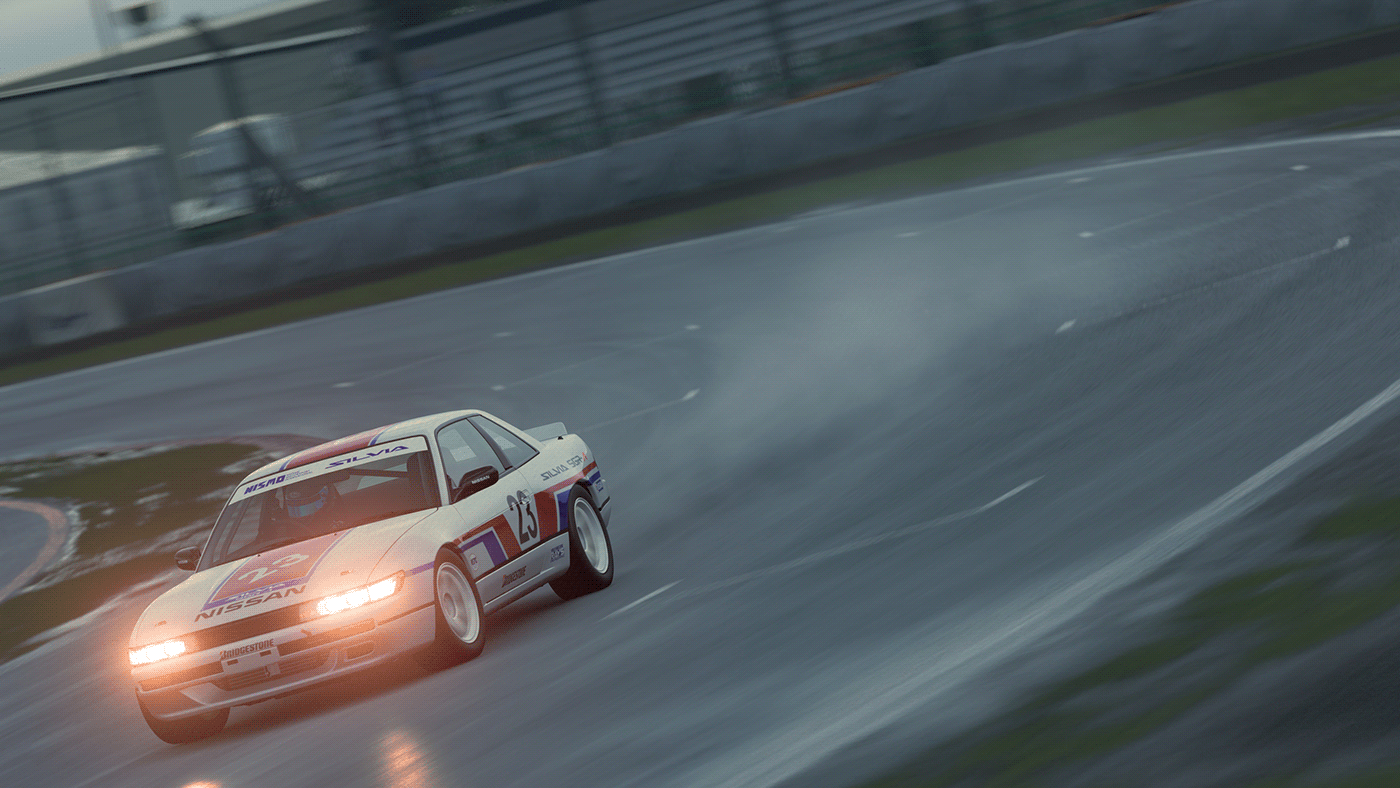
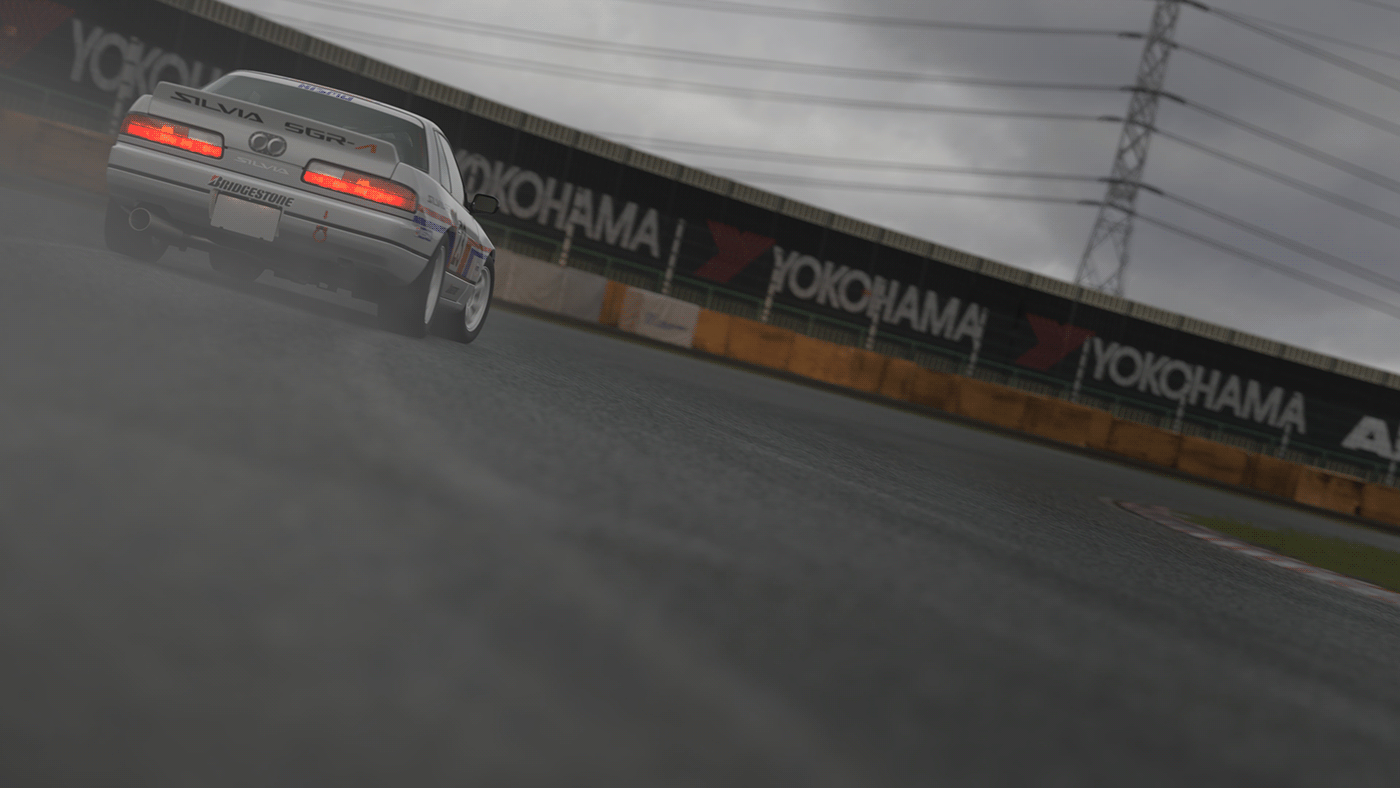


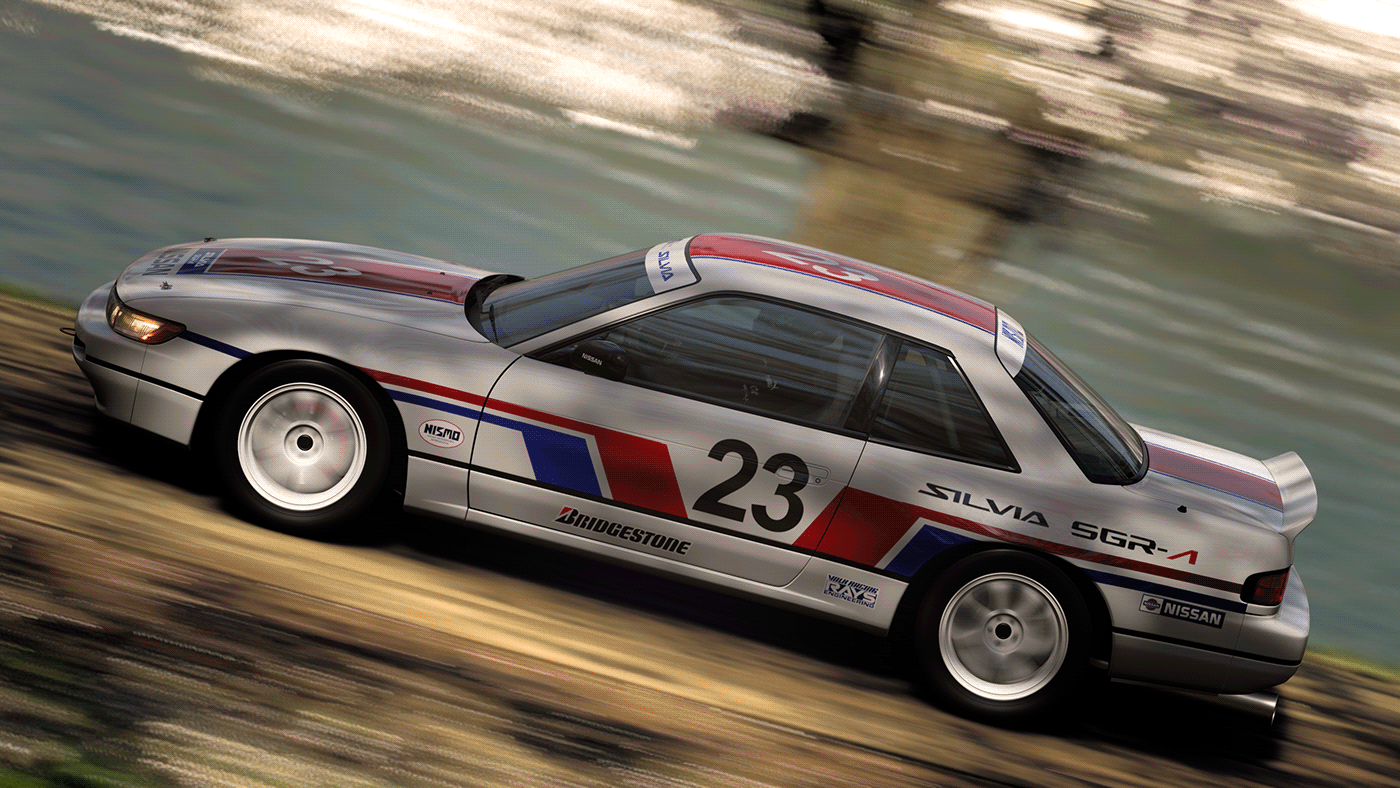

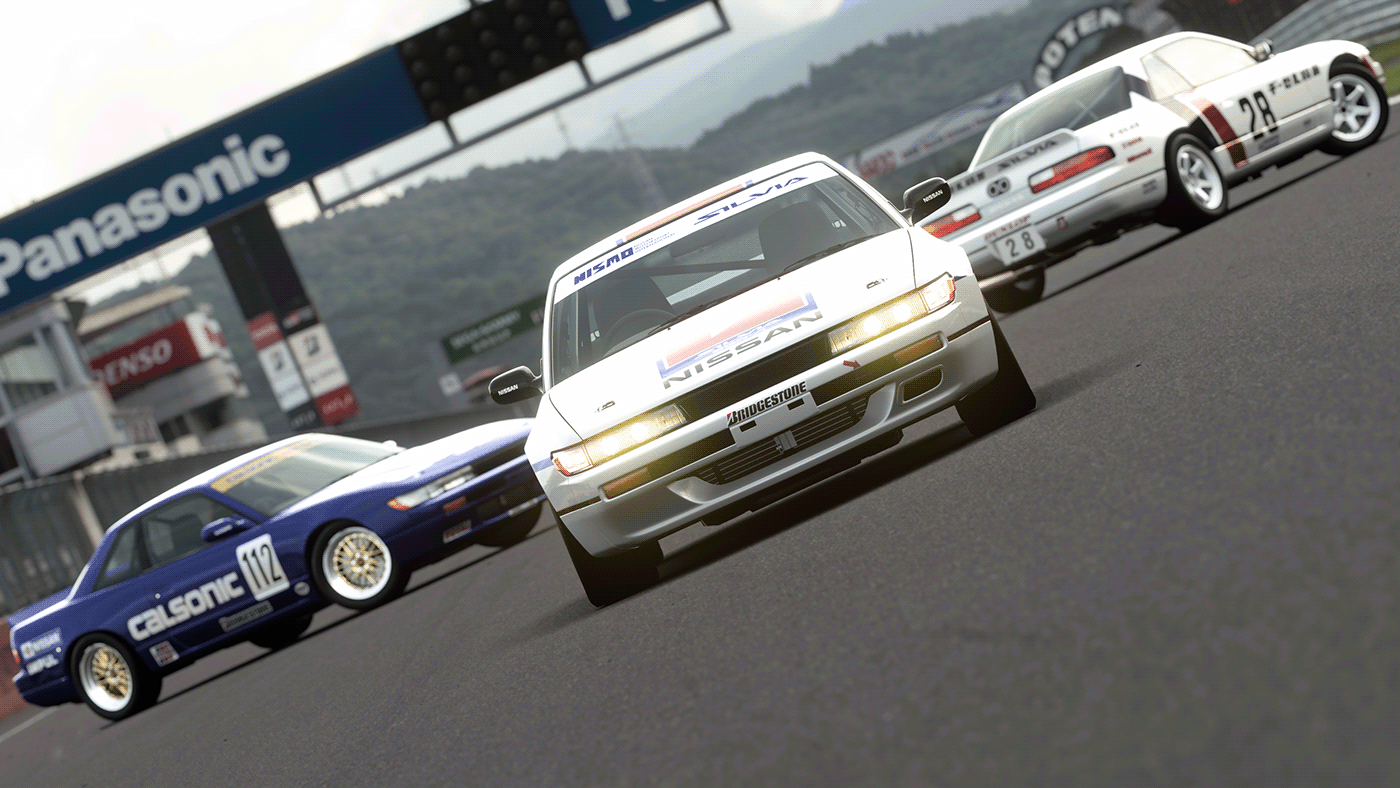
The testing started in Tsukuba in the Spring of 1989. It was time to see if their fruits of labor beard fruit. The times it set on the short course in Shimotsuma would be almost two-tenths faster than the pole lap for the class of 1.02,451. However the pace would not last, as the car started to smoke on the front straight. From the test driver, it seems like the engine's high rpm had actually shook itself out of alignment, and the driveshaft shattered, which pieces hit the oil pan, leading to loss of oil pressure and blew the engine.
The next few tests had no other issues, but setups to help deal with the 58:42 weight distribution meant that understeer was a constant worry. Plus the tires were taking a long time to heat up, and scrubbing and/or tire failures were somewhat constant, so softer rubber was asked to be developed to help the tire heating issue. The one benefit found was that it was very quick in damp-to-wet conditions, given the majority of the weight over the front wheels.

Photo Credit: @24HuresdeLoL/Gran Turismo 7
Sadly, the development became too much of a headache, and with the R32 Skyline in development, the car was mothballed, the R32 was fully developed, and with the taste of overall victory, the need for a lower class factory effort waned. In 1990, the R32 debuted, and as they say, the rest is history.
---ALL RIGHTS TO---
Nissan
Nismo
Volk Racing
NGK
Brigdestone
Tsukuba Circuit
JAF
Gran Turismo 7
Gran Turismo 7


